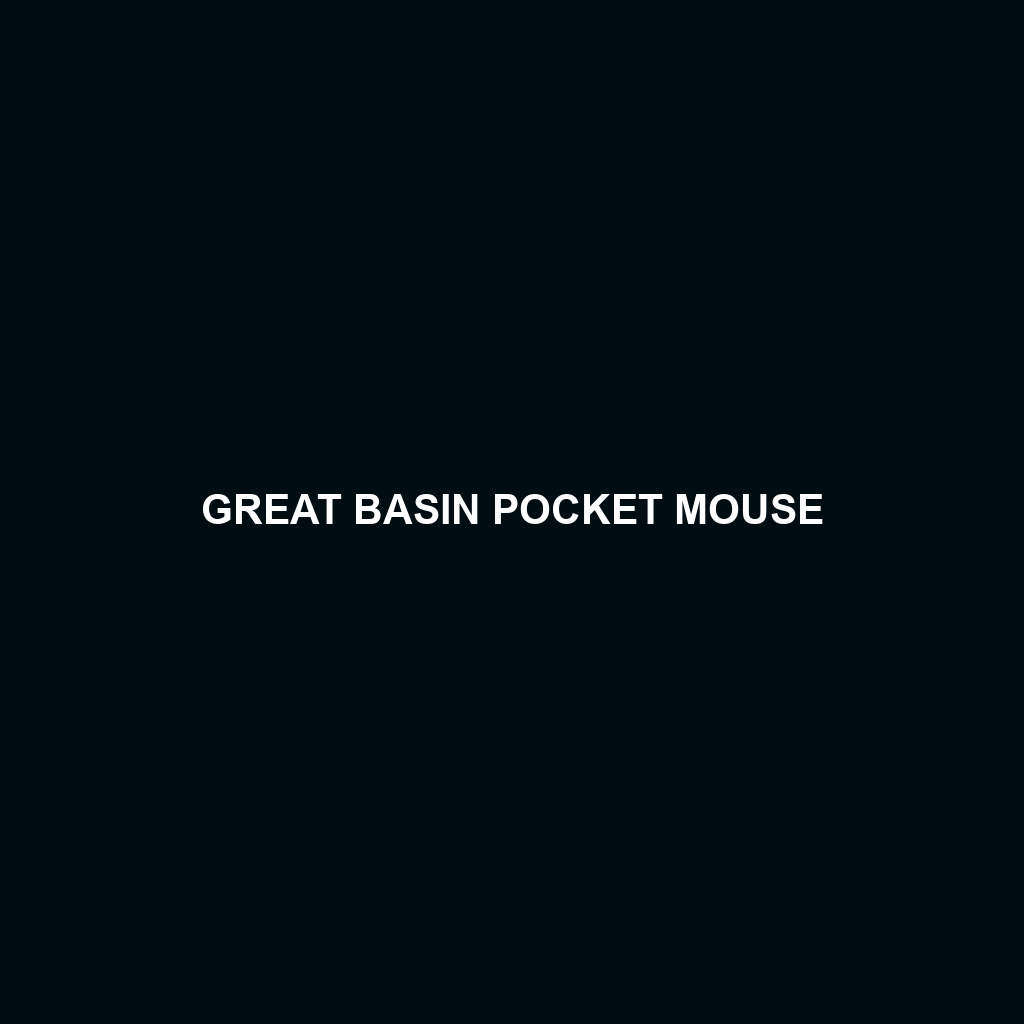Description of the Great Basin Pocket Mouse
Common Name: Great Basin Pocket Mouse
Scientific Name: Chaetodipus formosus
Habitat
The Great Basin Pocket Mouse primarily inhabits the arid regions of the Great Basin in the western United States. This includes areas such as Nevada, Utah, and parts of eastern California. It thrives in desert scrub environments, sagebrush flats, and open grasslands where it can find suitable burrowing sites and access to its food sources.
Physical Characteristics
The Great Basin Pocket Mouse is a small rodent, measuring approximately 7 to 9 inches in length, including its tail. Its fur is typically a grayish-brown color, which provides excellent camouflage against the sandy soils of its habitat. Distinctive features include large, rounded ears, which help in thermoregulation, and long, hairless tails that aid in balance. The pocket mouse is also known for its fur-lined cheek pouches used for transporting food.
Behavior
Great Basin Pocket Mice are primarily nocturnal, exhibiting behaviors such as foraging at night to avoid daytime heat. They are known for their exceptional burrowing skills, often creating extensive tunnel systems that provide shelter from predators and extreme temperatures. Socially, they tend to be solitary, although breeding pairs may occasionally share a burrow during the mating season.
Diet
This species primarily feeds on seeds, grains, and plant materials, favoring items like grass seeds and pinyon nuts. The Great Basin Pocket Mouse employs its cheek pouches to transport food back to its burrow, storing surplus for later consumption. This behavior is crucial for surviving the resource-scarce environments they inhabit.
Reproduction
The reproductive season for the Great Basin Pocket Mouse typically occurs in the spring and early summer. Females give birth to litters of 3 to 5 young after a gestation period of about 25 to 30 days. The young are weaned at 4 to 5 weeks old and reach sexual maturity within a few months, allowing for multiple breeding cycles within a year.
Conservation Status
As of the latest assessments, the Great Basin Pocket Mouse is categorized as a species of least concern; however, it remains susceptible to habitat loss due to urban development and agricultural practices. Continued monitoring of its populations and habitat conditions is recommended to prevent future vulnerabilities.
Interesting Facts
The Great Basin Pocket Mouse can survive without drinking water directly, obtaining necessary hydration from the seeds it consumes. This adaptation is particularly advantageous in its arid desert environment. Additionally, these mice are known for their exceptional sense of smell, which aids them in locating food.
Role in Ecosystem
The Great Basin Pocket Mouse plays a vital role in its ecosystem as a seed disperser, contributing to plant propagation within its habitat. As a prey species, it supports local predator populations, including snakes and birds of prey, thus maintaining the balance within the desert food web.
